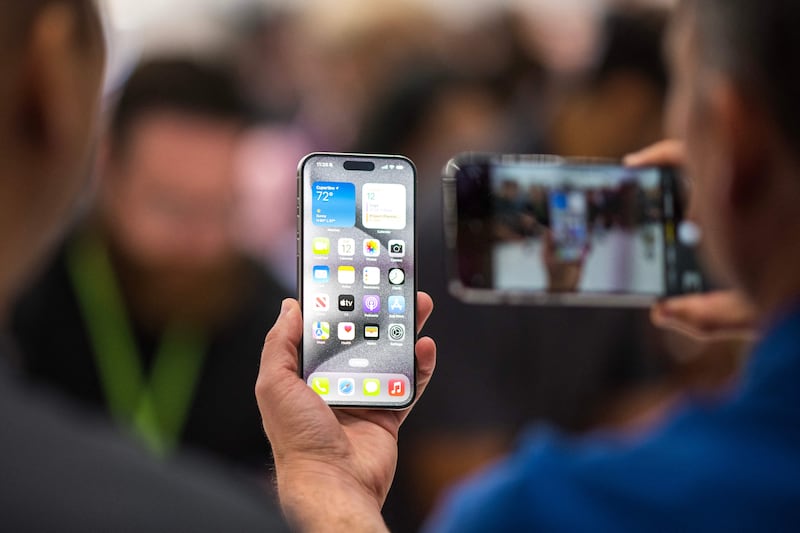Faster, stronger and now with added USB C, Apple’s iPhone 15 Pro and Pro Max should be in consumers’ hands by the end of next week.
The tech giant announced its latest smartphones at its Wonderlust event in California, focusing on the shift to titanium that makes the phones lighter, the new A17 chip that powers the premium devices, and the more powerful zoom on the Pro Max’s camera.
Immediately after the event concluded, attendees got a chance to get a brief look at the devices and form some initial opinions.
The first thing you notice is how light the phones are. Stripping out the stainless steel elements from the 15 Pro models has made a real difference to their weight; the 15 Pro Max weighs 221g, significantly lighter than the 240g of the iPhone 14 Pro Max, while the 15 Pro is only 187g, compared with the 206g of the iPhone 14 Pro.
[ Apple cuts Irish prices for top of the range iPhonesOpens in new window ]
[ Apple disputes French radiation findings on its iPhone 12 modelOpens in new window ]
[ Apple goes carbon neutral on new WatchOpens in new window ]
The titanium frame is also supposed to be more durable than anything that has gone before it, although we didn’t get to test that particular claim, and the slight redesign makes it fit more easily in your hand. It helps that Apple has shaved a fraction of an inch off the height and width of both models while managing to keep the screen sizes the same. Once again, the titanium frame is responsible for this development.
The camera was also an area of focus during the event. Both the Pro and Pro Max have a 48 megapixel camera, the same as last year, but with a bigger sensor. The main camera lets you easily switch between different focal lengths – 24mm, 28mm and 35mm – and super high-resolution photos are available in 24 megapixel and 48 megapixel resolutions.

The two models get the improved portrait photography capabilities that allow you to change the focus of the shot after you’ve taken it, and better night photography for lowlight shots. The camera will also capture more information when you are taking a normal photograph, recognising if there is a person or animal inside the frame so you can create a portrait shot from it after the fact.
Both cameras are excellent, but during the brief demo, the capabilities of the iPhone 15 Pro Max really stood out, with the new 5x zoom sure to grab attention. This tech is similar to what you see in Samsung’s flagship smartphones, with the S23 having 10x optical zoom.
It is impressive in person. The zoom is smooth and there is a noticeable difference between the 14 Pro Max’s capabilities and those of this latest smartphone.
Other features coming to the 15 Pro and Pro Max include the ability to shoot spatial videos – essentially 3D videos – that can be used for Apple’s Vision Pro headset, due for launch next year.

Will Apple’s new iPhone 15 have consumers rushing to upgrade?
The action button is another interesting development. Replacing the mute slider on the side of the phone, the key thing about the action button is that it is customisable. Out of the box, it will remain a mute button; one press will show the phone’s status, a long press will mute or unmute the phone.
But you might not need a mute button. You might prefer to have a dedicated camera button, for example, or to start voice memos with a single press. Apple has a series of suggestions for its core functions, but it’s essentially open to anything thanks to the inclusion of Siri shortcuts. You can map that button to any Siri shortcut you can create, and third-party developers will also work to create potential functions that users can access on the phone.
A new iPhone means a new chip, and the 15 Pro models will get the latest A17 Pro chip, adding an extra core to the graphics processing unit. On paper, that won’t mean much, but in practice, the A17 Pro powers some impressive features, such as processing Siri requests on the device, and ray tracing for gaming, a technique that is used to simulate real-world light. A brief gaming demo showed the developments, with graphics and effects you would expect to see in a console brought to the small screen.
A more extensive review of the iPhone 15 Pro and Pro Max will follow in the coming weeks.















